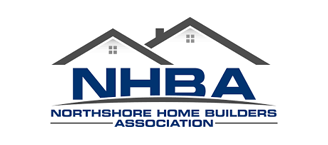FAQs
Reliable Foundations
How can I tell if I need foundation repairs?
Foundation repair needs can be identified through several indicators. Structural signs include cracks in walls, particularly near openings or corners, uneven floors, gaps between walls and ceilings or floors, and doors or windows that don't operate properly. Moisture-related issues such as water pooling near the foundation, mold in crawl spaces, and white residue on foundation walls are also warning signs. Foundation movement may manifest as settling areas around the home or a tilting chimney. Other indicators include nail pops in drywall and warped ceilings. If you observe these signs, document them with dated photographs and arrange for a professional inspection promptly, as foundation issues tend to worsen over time.What are the steps to getting your house foundation leveled?
The process of leveling a house foundation typically involves six main steps. First, a certified technician conducts a complimentary, no-obligation inspection to assess the situation and provide a diagnosis. Next, a customized proposal is presented, detailing the recommended solution, timeline, costs, and warranty information. The third step involves preparing the site with minimal disruption to the property. The actual leveling process follows, utilizing methods such as steel piers, foam injection, or jacks, depending on the specific requirements. After completion, a thorough cleanup and final inspection are conducted to ensure structural integrity. Lastly, the homeowner receives warranty documentation and ongoing support.Can I stay in my house for foundation repairs?
In most instances, residents can remain in their homes during foundation repairs, particularly when working with professional teams like reliable foundations. The ability to stay depends on the nature and extent of the repairs. For minimally invasive procedures such as foam injection, crawl space support, or exterior pier installations, occupancy is generally not affected. Slab leveling often allows for normal use within hours. However, temporary relocation may be necessary for major interior pier installations, extensive crawl space work impacting utilities, or severe structural shifts requiring temporary support or lifting.When should I resurface vs replace my pool deck concrete?
The decision to resurface or replace pool deck concrete depends on its condition. Resurfacing is appropriate when the concrete is structurally sound but exhibits surface-level damage such as minor cracks, discoloration, or spalling. Replacement becomes necessary if the deck shows severe structural issues, extensive or deep cracks, or is no longer level. Regular maintenance, including cleaning and resealing every 1-2 years, can help extend the life of your pool deck.How long should Pool Decking last?
The longevity of pool decking varies based on the material used, climate conditions, and maintenance practices. Concrete decking typically lasts 10-15 years, while stamped concrete overlays can endure 15-25 years with resealing every 3-5 years. PVC or vinyl decking can last up to 50 years with proper care. Epoxy coatings generally have a lifespan of 10-15 years, and poly coatings can last 15-20 years. Regular maintenance and appropriate care can significantly extend the life of your pool decking.






